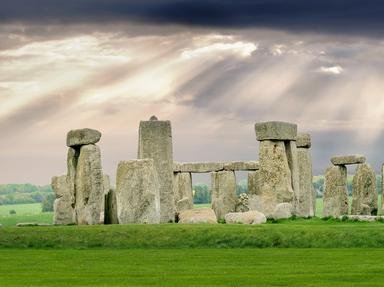Quiz Answer Key and Fun Facts
1. To take a tour of the Taj Mahal, one must enter the grounds by way of the Great Gate. On which side of the complex is it located?
2. What is the translation into English of the name Taj Mahal?
3. On either side of the featured mausoleum, near the north end of the complex, you will see two other buildings, oriented to face each other. What was their original function?
4. The four corners of the mausoleum feature four tall thin towers, each having several balconies and a covered chamber at the top called a chhatri. What is the name for this kind of tower, commonly found on mosques?
5. On the top of each tower, and the top of the central dome, is a decorative device which is given what architectural name?
6. At a number of places around the Taj Mahal you will see engraved patterns such as those that frame this window. What is their significance?
7. The walls of the Taj Mahal are highly decorated - this quiz cannot even begin to show you all the magnificent details! Here you can see a detail of floral decorations. The lower flowers and vines are sculpted. What is the technical name for this type of sculpture, in which the objects only protrude slightly from the background?
8. This is a detail of a decoration, similar to the upper part of the image in the previous question, constructed with a decorative technique called 'pietra dura'. What is the essential characteristic of pietra dura?
9. Under the central dome is the cenotaph which is the reason behind the construction of the Taj Mahal. The cenotaph is surrounded by a decorated octagonal openwork screen, as shown in the image. What is the name for this kind of screen that is typical of both Hindu and Islamic architecture?
10. Are the beautifully decorated sarcophagi in the main chamber of the Taj Mahal the actual tombs of Mumtaz Mahal and Shah Jahan?
Source: Author
looney_tunes
This quiz was reviewed by FunTrivia editor
stedman before going online.
Any errors found in FunTrivia content are routinely corrected through our feedback system.
